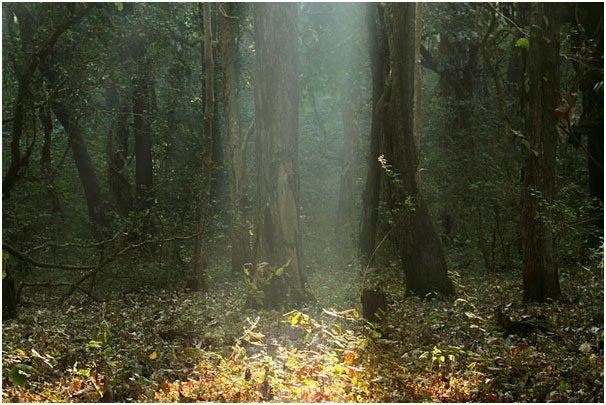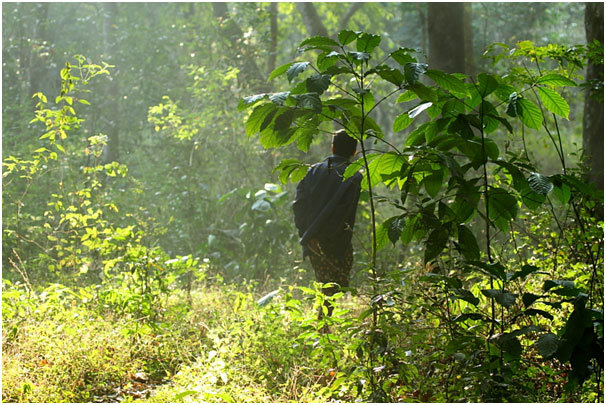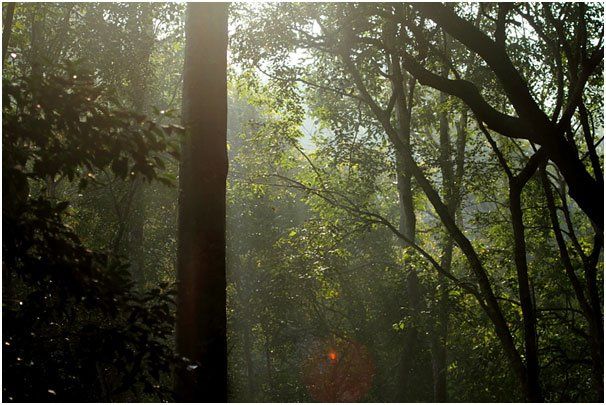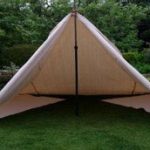
The new age of healing-forest bathing
The new age of healing-forest bathing.- By.Anju.Ghyanchand.
“Thousands of tired, nerve-shaken, over-civilized people are beginning to find out that going to the mountains is going home. Wilderness is a necessity.”
-John Muir.
He was a wise man, that John Muir. He knew that a rendezvous with nature wasn’t just a change of scene, but a complete changeover of the mind, body, heart and soul. And quite literally so.
As more and more people are discovering the joys of spending time in the midst of nature, scientific researchers are proving that it is, in actuality, beneficial to one’s health in more ways than previously imagined.
Of course the mental effects of a trip to the wilderness or just being in the presence of nature and trees are quite obvious in the effect they have on the way you “feel” afterwards. How quickly you can go from being stressed and chaotic to being calm and relaxed no matter how long a walk you have taken is there for all to see. The exhaustion felt from the walk isn’t the same as one you feel on working too much in the office and this feeling quickly wears off once you sit and look around you. Yes, the difference is stark .You can be sure of it because you can feel it. And no better proof is necessary.
But is there a significant change to your body’s physiology too when you take a walk in the forest?
Well, the orient, specifically Japan not just says yes to this but also has research to back up their claims.

“Shinrin-yoku” or forest bathing is simply the act of walking into a forest or an open place with lots of foliage and breathing in the “forest atmosphere”. This has been part of their practice alongside alternative medicine and they swear by it. And the world seems to be catching up quickly.
It was a term, coined by a man named Mr. Tomohide Akiyama in 1982 during his time as director of the Japanese Forestry Agency, though the presence of Japanese gardens since time immemorial probably means the benefits were recognised pretty early on.
Initially the idea was based on the belief that spending time in nature would be good for the mind and the body. But as the practice began catching on and more studies were conducted, it was discovered that this experimental walk in the forest wasn’t the same as a walk in an urban set up and there were lower levels of the stress hormone cortisol in subjects after forest walks compared with those who took laboratory walks.
Even if you ignore the obvious fact that you need to walk, which means that your body is already benefitting from the exercise, there is quantifiable evidence that proves that it’s the trees that do the trick and not just the exercise as one might be led to believe.
Our immune system fights off disease with natural killer cells (NK) that are already present in our bodies. By walking in the forest you boost your immune system as a result increasing the count of these cells. When we breathe in fresh air, we breathe the “phytoncides” that plants give off to protect themselves from insects .This chemical has both antibacterial and anti-fungal properties. Our bodies respond to this by increasing the number and activity of these cells. Some researchers even say that the scents and smells of the forest have a positive impact on the emotional centre of our brain and greatly reduce stress because trees like pine ,cedar etc. that contain phutoncides are known to reduce the levels of the cortisol stress hormone.

Scientific researchers tested the effects of this on several volunteers .Even after just a day; there was increased activity in such cells. Can you imagine what a month’s stay can do?!Or better still, the effect of doing this on a regular basis?
If you turn the bottle of the essential oils used in your neighbourhood spa around, one glance at the ingredients will leave you stumped. Isn’t it better to walk into a forest and get better “treatment” than pay loads of money for an hour’s sitting at the spa?
Traditional herbal remedies employ “terpenes” which are found in incredible variety and abundance in nature. Menthol, lemongrass and lavender are some of the popular ones. Some are even known to have anti-depressant and anxiolytic effects.
Interestingly, research has also shown that people living near trees have a better mental health than urban settlers and there are lower rates of prescriptions for antidepressants and complaints of mental disorders coming from such areas.
Children were also shown to have better cognitive skills when exposed to a forest like environment .Their manual dexterity was increased and they were able to assess risks better when compared to those raised in other environments. Studies also show that children spending time in an outdoor environment have reduction in fatigue and in children with ADHD have a reduction in related symptoms. The results are so remarkable that further research is being carried out on approaching ADHD in relation to natural environments. The children were simultaneously placed in opposing environments, one of trees and other a regular walk, there were significant changes in mood and concentration and they were better open to treatment as compared with the children who took a normal walk.
We know that walking on a regular basis brings down blood pressure but Japanese research has shown that in comparison to a two hour walk in the forest and one in an urban setting, a forest walk reduces blood pressure by a larger percentage than the other.
The effects of this can also be noticeable in diabetics who participate in forest walking…their blood sugar levels saw a big plunge.
More and more evidence is being collected to support the claims that the percentage of green space in your living environment is directly proportionate to better mental and physical health irrespective of your age or socio economic status.
Some reports even claim that tuberculosis has been cured in forest based sanatorium, though further research needs to be carried out on the subject.
Merely looking at a tree or other aspects of nature for a long period of time, it seems ,can help us focus better on even our daily activities and relieve us of direct attention fatigue{spending long time doing one activity or thing}.
Such a preventive approach to health has the advantages of being widely accessible, inexpensive and free of side effects. Even a few minutes around green spaces can show improvements .It’s like a doctor’s prescription that comes without a price tag and any side effects.
Patients recuperating from surgery or long term disease who had “green” views are found to have shorter stays and took fewer painkillers than ones with walls for a view.
Acute emotional changes, reduction in stress fatigue and boredom are just some of the obvious effects of “shinrin yoku” but therapeutic landscapes have always been part of any form of alternative healing. It is the reason you have spas and resorts in deep natural environments than in a cement building.
Forest bathing allows for breathing in air that contains volatile essential oils from surrounding trees with active components such as limonene that have antimicrobial and immune-boosting properties.
Forest mist has powerful benefits and is so effective because it results from a passive attempt to gain our attention through the restorative power of natural environments. Every aspect of city life forces you to strain your cognitive abilities to block out the stress and free flowing energy and form distract you from gaining measurable life.
It might seem over rated but the benefits aren’t just “in your head”. Sure, looking at nature or outside a window can produce some of the same effects but for calming the five senses, the fact cannot be overstressed that you need to go into the forest in order to reap maximum benefits.
Woodlands and trees have also impacted the air quality through deposition of pollutants to the vegetation canopy in densely green areas and show a reduction of summertime air temperatures, and decrease of ultraviolet radiation.
How to Forest Bathe
There is no right or wrong way to forest bathe; just spend time in the woods in whatever way feels best for you. However, there are a few things you can do to make the most of your experience:
- Yes, the first and most obvious one is…turn off all your gadgets .You don’t need distractions when you are in the healing environment.
- Open all your senses to your surroundings. And stay as long as you can.
- Don’t over exert yourself. Walk at a comfortable pace. The point is to get maximum out of you endeavour whilst easing and relaxing your body. Sit and rest when you want.
- For urban dwellers make it a practice to just sit under a tree during your lunch or tea break. A few moments alone can do wonders.
- Participate in outdoor activities like gardening, birdwatching or yoga outdoors.
We are all part of a planet that sustains itself on mutual symbiosis. If only we could do as much for the trees as they do for us.
Sitting in the balconies of our swiss tents or stone cottage, relaxing listening to the various calls of nature while focusing on the swaying trees is one the best ways to enjoy forest bathing at Bandipur / Mudumalai. Book your forest bathing experience at Deep Jungle Home today.



